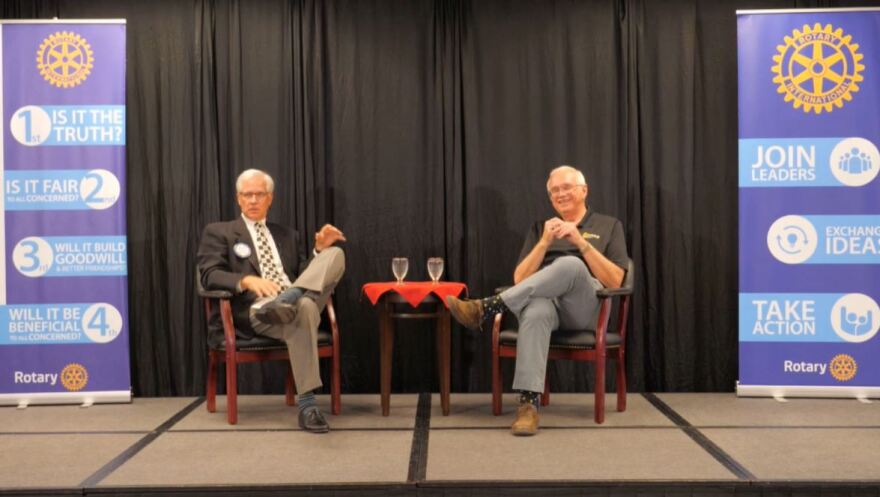Members of the Rotary Club of Downtown Sioux Falls and their guests had the opportunity to hear from the project manager for the James Webb Space Telescope during their July 25 Meeting. Images from the telescope were unveiled July 12.
Bill Ochs worked as project manager for the Webb telescope for over a decade before its launch last December. Images from the telescope were unveiled July 12.
"It’s phenomenal,” Ochs said of the public’s excitement over the photos. “We knew it would be impressive, but until you really see them, you don’t realize how impressive they really are.”
Ochs gave a presentation during the meeting where he explained details of the telescope’s launch, some engineering challenges the team faced, how the Webb telescope differs from the Hubble telescope and some of its early observations. He also answered some questions from meeting attendees.
The Webb telescope was first proposed in 1996 to explore the cosmic history of the universe. This was after the Hubble telescope launched in April 1990.
The Webb telescope records images of space using infrared light from 1 million miles above Earth. Its predecessor, the Hubble telescope, used visible and ultraviolet light to take photos from 340 miles above Earth.
“We’re a lot bigger than Hubble,” Ochs said. “If you look at the Hubble telescope and compare it with some sizes, Hubble is about the size of a school bus, we’re about the size of a 737.”
The Webb telescope is also lighter than the Hubble because NASA launched it further into space.
The Webb telescope is equipped with a 21-foot-tall mirror composed of 18 different segments and a sunshield the size of a tennis court to keep the telescope’s equipment cold. It has four main instruments: a near-infrared camera, a near-infrared spectrograph, a mid-infrared instrument and a near-infrared imager.
The telescope is an international collaboration; two of the instruments and the rocket that launched it come from Europe while another instrument was Canadian made.
“Overall, we had participation from 29 U.S. states and 14 countries to build the Webb telescope,” Webb said. “Took about 20 years to build Webb, but about 20,00 people to build the telescope and observatory.”
Ochs told the Rotary about some of the challenges his team faced in developing and launching the telescope, including making sure the mirrors were light enough to launch but durable enough to survive the trip, making sure the instruments would work at extremely cold temperatures and figuring out how to deploy the sunshield without damaging it.
The telescope launched from French Guiana, South America, and had to be transported there by ship, as it was the only thing large enough to carry the telescope and all its equipment.
Ochs said the telescope will help identify how galaxies assemble and combine, what the first light of the universe was, how stars and planets develop and the chemical and physical building blocks of solar systems.
“We have four science themes,” Ochs said. “As we move forward, there’s going to be more and more. As you use any tool, the more you use it, the more you learn, the more different things you can learn to do with it.”
The telescope’s photos will be used by researchers and other groups to study how the earliest parts of the universe might have formed.


